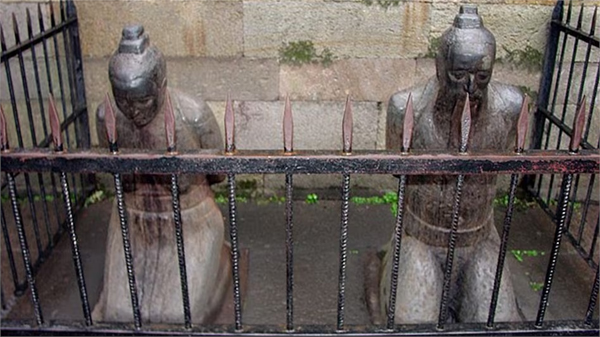The Huli Wigmen are a tribe that inhabit several villages in Papua New Guinea. They are known both as some of the most fierce warriors in the region and as masterful “hairstylists”who craft flamboyant wigs out of their own hair.
Not much is known about the origins of the Huli men’s tradition of crafting wigs from their own hair. When researchers discovered the tribe, they were already practicing the custom, and since they are believed to have lived in the area for at least 1,000 years, the tradition must have been developed sometime during this period. Males in their late teenage years and early 20’s leave their community behind and go to Bachelor school, where older man teach them all about manhood, including how to make beautiful wigs from their own hair. They are sequestered in the jungle for at least 18 months, after which they can return to their villages or stay a while longer to acquire more knowledge and improve their skills. The wig-making process starts with the trainees growing out their hair. When it’s big enough, the shaping of the wigs begins while the hair is still attached to their heads. Most of the shapes are saucer-like, so the men have to sleep with bricks and other objects under their heads to keep their heads off the ground and prevent the hair from getting flattened.
Photo: Drew Douglas
It takes around six months for the hair to grow big enough for a nice wig, at which point it’s cut off from underneath. In earlier times, they would use bamboo to separate the hair from the scalp, but nowadays the Huli use knives. Once removed, the wigs are decorated with feathers from various birds, including parrots, birds of paradise and killer cassowaries. The men leave Bachelor School with 2-3 wigs that they use in festive times, festivals, weddings and greeting tourists. Despite what you may think about guys who make fancy wigs, the Huli are as manly as they come. They have a terrible reputation for fighting among themselves and with other tribes and their fierce look is enough to terrify a lot of people. The men live separate from Huli women, they don’t eat together, and rarely sleep in the same bed. Children are raised by their mothers. The men will occasionally spend some time with them, but for most of their lives, the Wigmen live among fellow warriors.
Photo: Drew Douglas
Despite their fighting history, the Huli have grown accustomed to tourists, and are very friendly with visitors. They still retain their ancient traditions and customs, but most of them have no problem dealing with outsiders.
Photo: Drew Douglas
Source: Wanderlust and Lipstick















